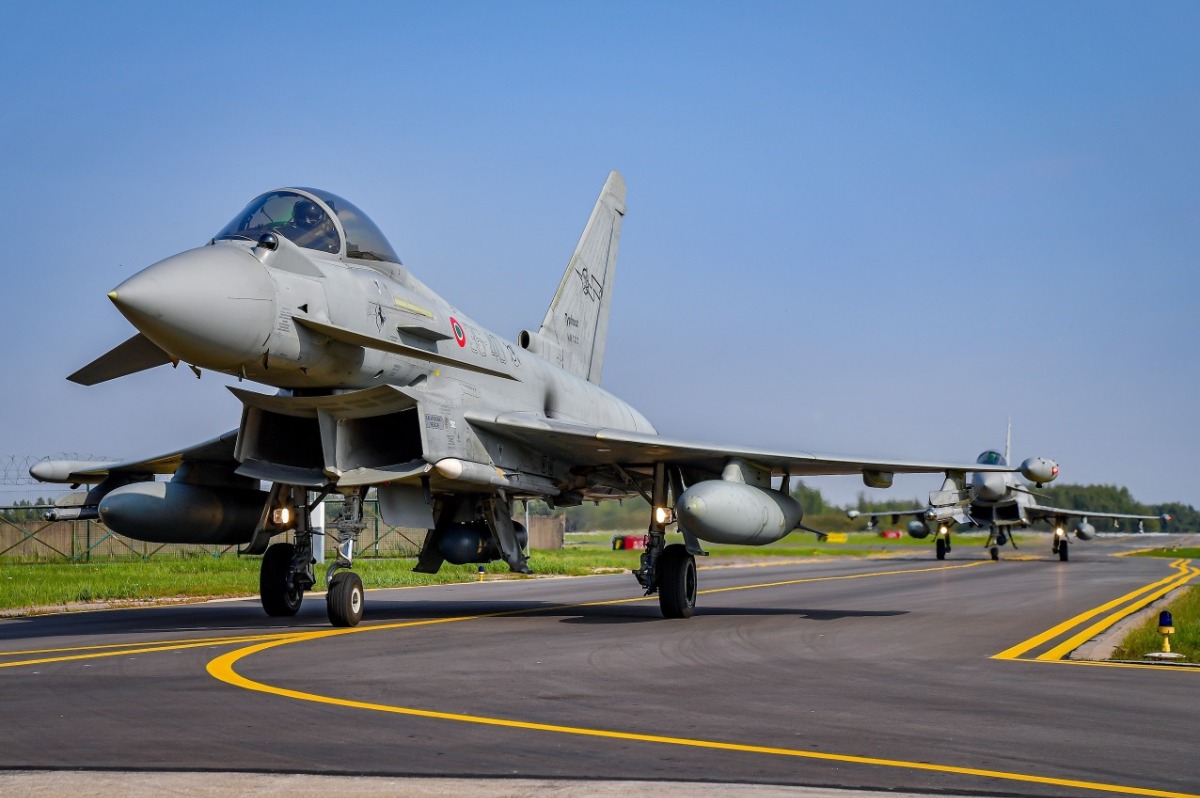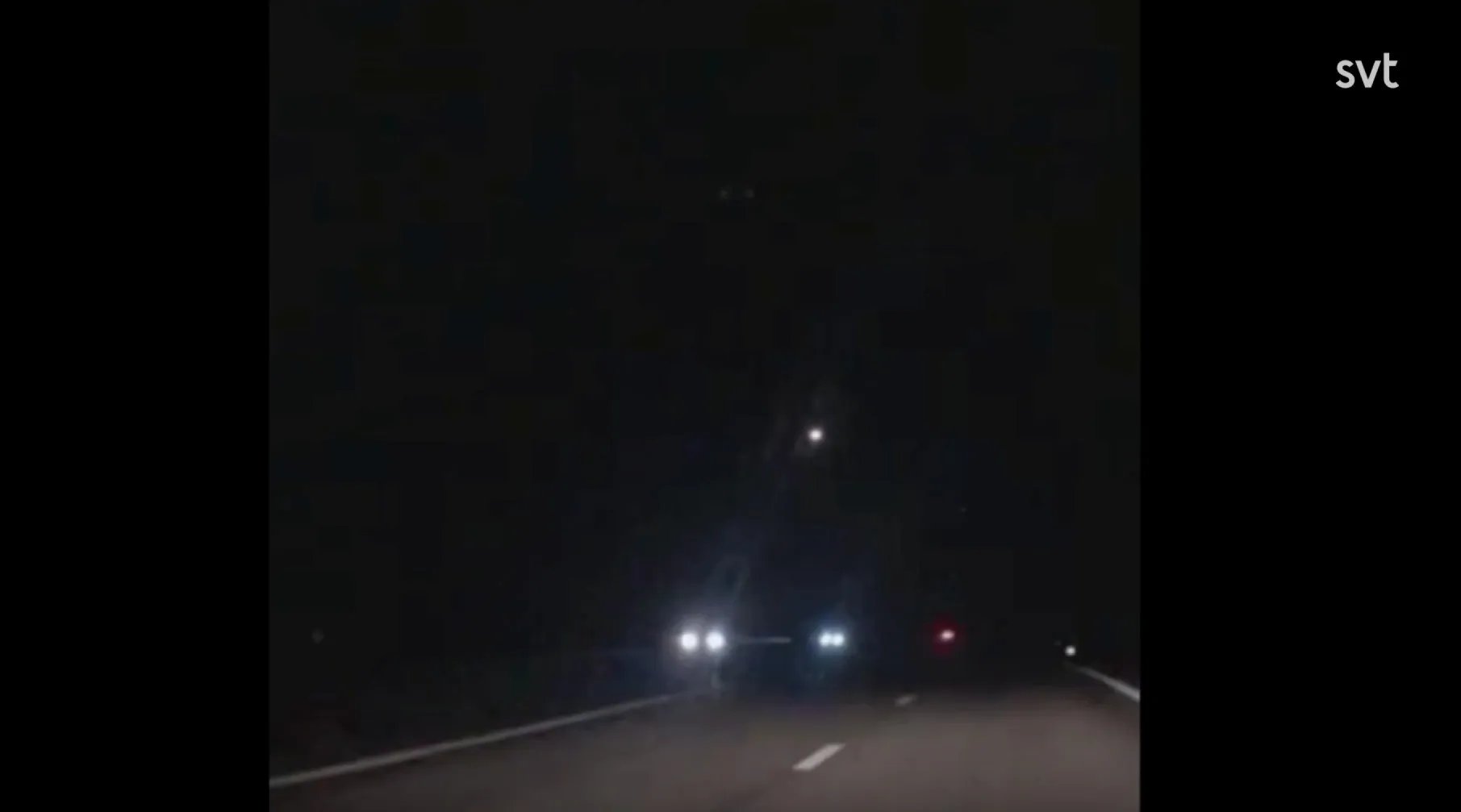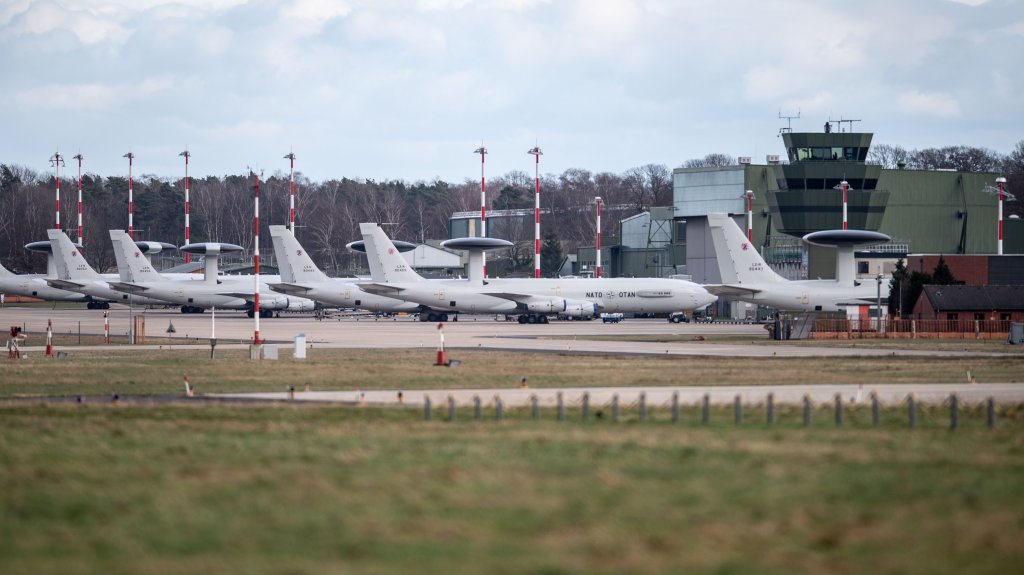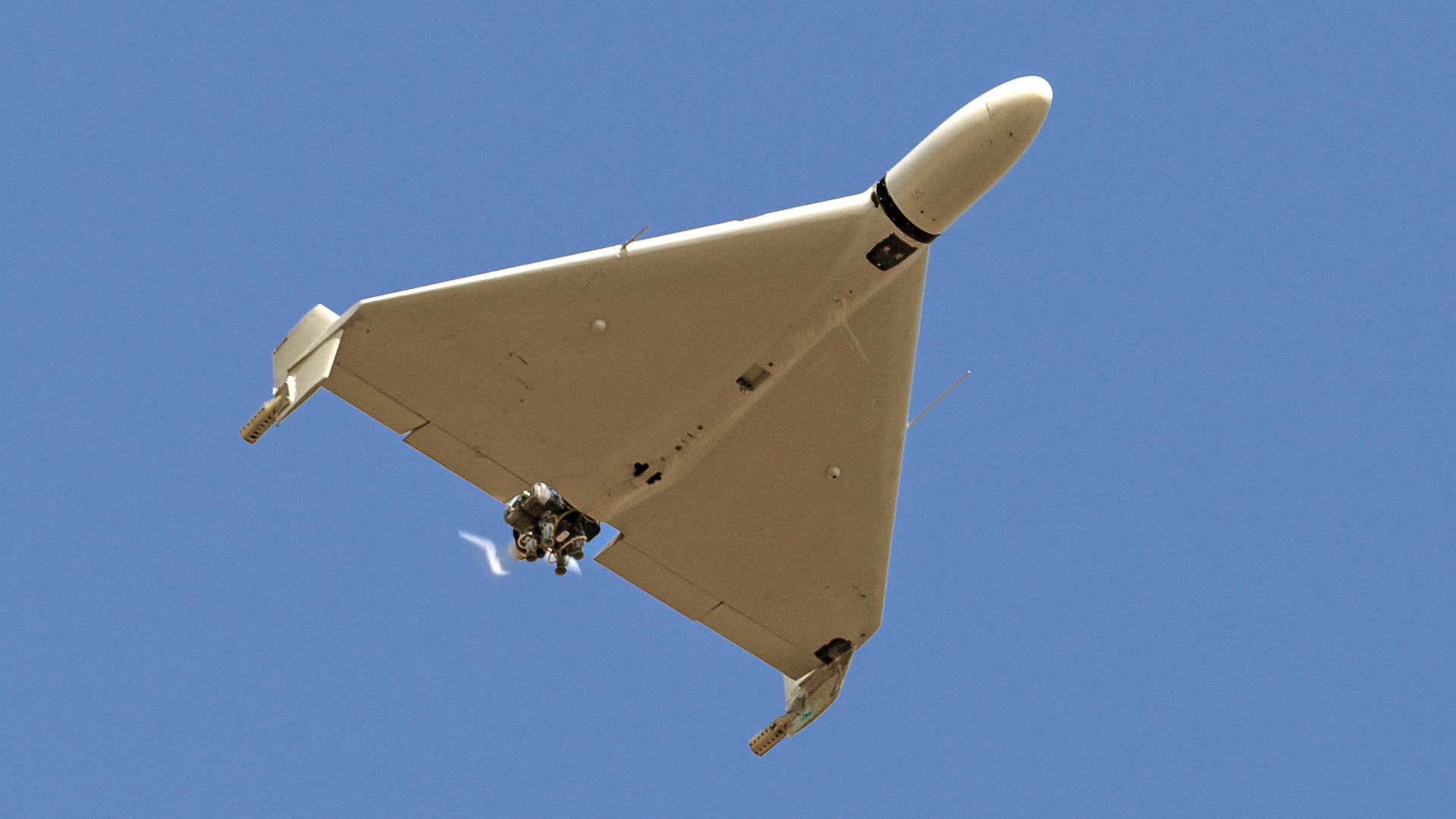A Russian long-range attack drone breached Latvian airspace before crashing on the territory of the NATO country, officials confirmed, in what is a new development on the fringes of the war in Ukraine. Romania, another NATO member, also reported that a Russian drone came down on its territory. While all indications are that these drones were taking part in the war in Ukraine, the latest incidents come as the alliance is increasingly concerned about possible drone attacks on its territory, as part of Moscow-inspired efforts within Europe. This morning, Stockholm’s international airport was back online after reports of drones in its vicinity led to a temporary suspension of operations.
Citing the Latvian Ministry of Defense, the local LETA news agency reported that an initial investigation indicated that the drone had entered Latvian airspace from Belarus on September 7 before crashing near the city of Rezekne, in the east of the country, around 50 miles from the Belarusian border. Belarus hosts various Russian military units involved in the war in Ukraine and provides launch sites for drones as well as missiles and aircraft.

While the type was initially undisclosed, the Latvian Ministry of Defense today stated it was an Iranian-designed Shahed-type one-way attack drone, a type used extensively by Russia to strike targets across Ukraine. The drone was fitted with an explosive warhead and appears likely to have been flying in entirely the opposite direction compared to the likely location of its intended target.

Local officials presume that the drone was not intended to enter Latvian airspace, Leonids Kalnins, the commander of Latvia’s Joint Headquarters, saying that the drone “did not have a specific purpose to fly into Latvia.”
The Latvian Minister of Defense Andris Spruds said the incident was “confirmation that we need to continue the work we have started to strengthen Latvia’s eastern border, including the development of air defense capabilities and electronic warfare capabilities.”
It should be noted that there have also been recent reports of Belarus shooting down or attempting to shoot down stray Russian drones within its airspace.
Reports in the Ukrainian press last week claimed that Belarus, for the first time, successfully shot down a pair of Russian drones that entered its airspace on September 5. Belarusian MiG-29 Fulcrum fighters apparently downed the drones near the Belarusian city of Homel.
The results of a previous Belarusian attempt to use MiG-29s to intercept wayward Russian drones, on August 29, remain unconfirmed.
With borders to Belarus and Russia, Latvia is very much on the front line of tensions between NATO and Moscow. Latvia has been a staunch backer of Ukraine since the full-scale invasion, and it has taken an increasingly hard line on Russia, especially as fears grow that the Baltic States could be at risk of Russian invasion should they have success in defeating Ukraine.

National air defense of Latvia is primarily entrusted to other members of the NATO alliance, which send rotational fighter detachments to the country under the Baltic Air Policing (BAP) initiative.
Currently, four Italian Air Force Eurofighters are based at Šiauliai in Lithuania under BAP. It’s unclear whether these aircraft responded to the drone incursion, but TWZ has approached the Italian Ministry of Defense for comment.

The incident also prompted Latvian President Edgars Rinkevics to call for a more concerted and coordinated NATO response to drone incursions — as well as airspace violations by crewed aircraft. On the social media platform X, Rinkevics wrote:
“The number of such incidents is increasing along the eastern flank of NATO, and we must address them collectively.”
Another drone incursion occurred on the southern portion of NATO’s eastern flank.
The Romanian Ministry of Defense said the country’s “radar supervision system identified and tracked the path of a drone which entered national airspace and then exited toward Ukraine.”
The incident occurred early on Sunday while Russian night-time attacks were taking place in neighboring Ukraine, with targets including civilian targets and port infrastructure” on the other side of the Danube, according to the Romanian Ministry of Defense.
In response to the incursion, two Romanian Air Force F-16 fighters were scrambled. Meanwhile, residents of the Tulcea and Constanta counties in south-eastern Romania were warned to take cover, with alerts being provided by text message.

“From existing data, the possibility of an impact zone on national territory was identified, in an uninhabited area near the village of Periprava,” the Romanian Ministry of Defense added. As of today, military personnel were searching for wreckage in the presumed area of impact.
“There weren’t serious issues on the ground,” Romanian Prime Minister Marcel Ciolacu told reporters. However, he warned that incidents of this kind “will continue,” since “we have a war on the border.”
Unlike Latvia, Romania has faced previous Russian drone and missile incursions since the start of Russia’s full-scale invasion of Ukraine. Not only does Romania share an extensive border with Ukraine, but some of its territory is very close to the Ukrainian Danube River, and its ports, which have been a frequent target of Russian drone and missile strikes.

On a domestic level, Romanian lawmakers are poised to discuss legislation that would make it easier for the Romanian Armed Forces to shoot down drones that enter the country’s airspace in peacetime.
The air defense of Romania has been bolstered in recent months by a detachment of French SAMP/T Mamba surface-to-air missiles and an air defense command post as part of NATO’s Integrated Air and Missile Defense (IAMD) initiative.
Romania also hosts rotational detachments of NATO fighters, the Air Shielding mission, which serves to bolster alliance air defenses in the Black Sea region. This summer, the Finnish Air Force took part in NATO Air Shielding in Romania for the first time, with its F/A-18C Hornet fighters being scrambled to monitor a previous drone incursion in late July.
The two incidents also led to further calls from NATO officials to better respond to Russian air incursions. Not for the first time now, NATO Deputy Secretary General Mircea Geoana described the drone incursions as “irresponsible and potentially dangerous,” although she noted that there was no evidence that they were deliberate.
Ukraine also called out Russia for the drone incursions, Ukrainian Foreign Minister Andrii Sybiha writing on X that the incidents in Latvia and Romania were “a stark reminder that Russia’s aggressive actions extend beyond Ukraine.”
One alliance member that has raised the issue of shooting down rogue Russian drones even before they enter its airspace is Poland, despite NATO opposition to the idea.
“I’m personally of the view that, when hostile missiles are on a course of entering our airspace, it would be legitimate self-defense [to shoot them down] because once they do cross into our airspace, the risk of debris injuring someone is significant,” Polish Foreign Minister Radoslaw Sikorski said in an interview with the Financial Times earlier this month.
As well as the risk of ‘rogue’ flights by Russian drones involved in the war in Ukraine, NATO is also increasingly alert to the possibility of deliberate Russian-inspired actions involving drones over its territories, up to and including potential kinetic attacks, as well as surveillance.
In the most recent drone ‘alarm,’ four drones were reported to have approached Arlanda International Airport in Stockholm, Sweden, last night, leading to multiple flights having to divert to alternative airports.
Local reports confirmed that operations at Arlanda International were suspended for a little over two hours last night. Staff in the air traffic control tower “sighted four drones of different sizes,” according to Cecilia Bengtström, of the Swedish Civil Aviation Authority’s press service.
At least one media report suggests that the drones were directly above the airport and that attempts were made to intercept them using “helicopters and other means.” It’s unclear what the results of these efforts were, but the airport was reopened to flight traffic at around 3.30 a.m.
Mysterious drone activity had been an issue in Sweden before now. In January 2022, just weeks before Russia’s full-scale invasion of Ukraine, there were reports of incursions in which unidentified drones were seen above multiple Swedish nuclear facilities, government buildings, and airports, some of which prompted the Swedish Security Service to declare a “national special event” investigation.

The Swedish police are now investigating the incident at Arlanda, which has echoes of similar reports of drone activity around an industrial park in Brunsbüttel, near Hamburg, Germany, which is home to a major floating liquid natural gas (LNG) terminal.
Prosecutors in Germany have said they consider it likely the drone flights are related to “espionage activity for sabotage purposes” and also cite “repeated” drone flights over “critical infrastructure.”
Concerns about drones being used for potentially nefarious activities — specifically, attacks — reportedly also led to a major security alert at Geilenkirchen Air Base in Germany last month, which you can read more about here. According to reports in the German media, the security scare at Geilenkirchen was caused by signs “of preparatory actions for a likely Russian act of sabotage” using a drone.

While stray Russian drones like those that apparently came down over Latvia and Romania at the weekend are a serious hazard, the potential disruption that could be caused by a deliberate drone attack is much more worrying.
In the past, TWZ has been prominent in its reporting on mysterious intrusions over critical infrastructure and very high-security military bases in the United States, but incidents of this kind are now being reported more regularly in Europe, too.
While tangible evidence of planned drone attacks or intelligence-gathering in Europe is not currently in the public domain, officials appear to be concerned that this is at least a realistic possibility and it would fit well with other ‘hybrid warfare’ tactics that Russia is pursuing, also including other types of sabotage and cyberattacks.
Speaking in June, NATO Secretary General Jens Stoltenberg outlined what he said was evidence of “a surge of sabotage, cyberattacks, instrumentalized migration, and other hostile actions by Russia” in Europe.

TWZ has previously looked at the factors that made a hybrid warfare campaign especially attractive for Russia. As Moscow seeks to undermine support for Ukraine within Europe, as well as destabilize its NATO adversary, employing drones would be a relatively low-cost and low-risk means of creating disruption and sowing fear. Equally importantly, by using proxies to launch drones, it could be challenging to directly trace such activities back to the Kremlin.
Europe, with its crowded airspace, is by now well familiar with the disruption that civilian-operated drones can cause, whether deliberately or not. But there is no easy way to tell whether a drone — or drones — in the vicinity of an airport or other critical infrastructure is the result of a hobbyist’s mistake or a deliberate attempt to cause disruption. In the latter category, the drone operator could simply want to achieve a disturbance, but they may also be intent on flying an explosives-laden drone into a nuclear power station, for example.
It is these challenges that are fueling calls within NATO for a more integrated and robust drone defense policy. In the meantime, it seems that both accidental incursions by Russian drones, and reports of unexplained drone activities of other kinds will continue to be a headache for the alliance in Europe.
Contact the author: thomas@thewarzone.com
